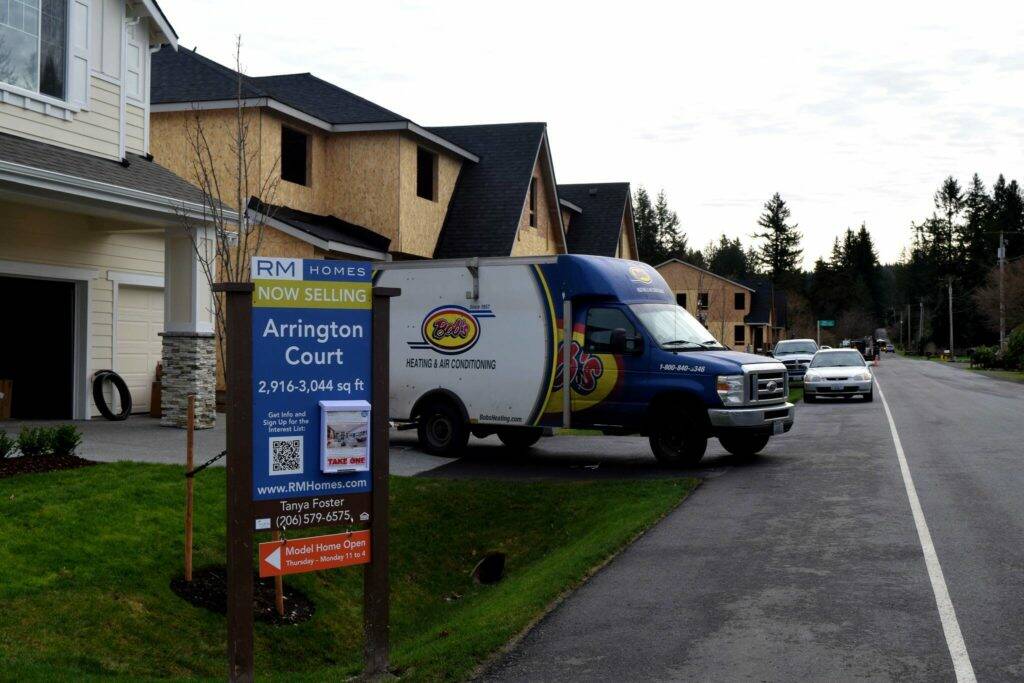In a major victory for Fall City residents, the King County Council last week unanimously adopted interim zoning regulations on all residential land in the rural town.
The 13-month-long interim zoning regulations establish new minimum lot size requirements of 10,000 square feet for all residential developments. It also doubles current standards for street and interior setbacks, now set at 20 feet and 10 feet, respectively.
Councilmember Sarah Perry, who sponsored the legislation, said the restrictions allow the county council to consider how it wants to manage growth in rural areas and complete a scheduled update to the King County Comprehensive Plan before more housing developments are permitted.
King County is in the process of a once-every-20-years update to the Comprehensive Plan, a high-level planning document that functions as a strategic plan for the county, as well as an update to a localized version of that plan known as a subarea plan. The updates will be approved by the council at the end of 2024, and will include a robust look at regulations and zoning that could make changes to development codes in Fall City.
The temporary zoning is the latest action taken by the council in response to residents’ frustrations over a number of new housing developments in Fall City. In May, the county council passed a seven-month emergency moratorium that prevented all residential subdivisions of five or more lots within the rural town.
With that moratorium expiring in mid-December, Perry proposed the interim zoning, saying it would function as a less restrictive extension of the moratorium, lasting until the comprehensive plan is completed.
“Passage today ensures there’s not a gap between the expiration of the moratorium and the adoption of the subarea plan,” Perry said, adding later that it is a “temporary solution.”
The new zoning requirements do not explicitly reduce the number of homes that could be built, maintaining current zoning regulations that allow up to four units per acre on residential land within Fall City.
But there is some uncertainty — and concerns from developers — whether that will be achievable in practice between the new requirements and navigating the placement of septic systems. (Fall City has no sewer system and runs entirely on septic.)
Perry emphasized the stated intent of the legislation is not to reduce the number of houses developers can build on the land, but to respond to residents’ concerns about preserving rural character.
“The overall goal of this ordinance is to continue to allow Fall City to meet its maximum density allowed under the R-4, four units per acre, zoning while maintaining the rural character of this historic town,” she said.
The legislation comes in wake of an influx of new housing developments. Bellevue-based Taylor Development has submitted applications for eight subdivisions that could add well over 100 single-family homes to Fall City, an unincorporated town of about 2,200 residents.
King County defines Fall City as one of its three “rural towns,” a marker denoting historic communities that are not allowed to become incorporated cities. Residents, many of whom have decried the new developments, say the designation means development in Fall City should be handled differently, with an emphasis on preserving rural character through large lots and setbacks from the street and other homes.
Most homes in Fall City are on large lots, spaced far apart, with each having an individual septic tank. Taylor’s developments buck that practice, featuring a more suburban style development with tightly clustered homes that all share a single, large septic tank.
Residents who spoke in support of the interim zoning ordinance did not explicitly take issue with the number of homes being built, but asked for regulations ensuring that new housing developments mirror the appearance of existing ones.
“I don’t oppose growth and new homes in Fall City. I’m not asking for the R-4 designation to be changed,” said Cindy Parks, a town resident. “But establishing minimum lot sizes and setbacks will ensure future developments in Fall City will look like the other developments in our town.”
Representatives for Taylor have repeatedly criticized the council’s actions to alter development. They’ve also dismissed residents’ concerns as purely an effort to prevent growth.
Robert Fitzmaurice, Taylor’s director of land entitlement and development, has called the temporary zoning ordinance a mistake and said this week it was “brought under false pretenses” and will “further actions of an anti-development group.”
Fitzmaurice said the interim ordinance is a major emergency rezone, not just a few minor modifications. The change in effect would limit the density of developments to just two units per acre, he said.
“Please do not allow the downsizing of this area when the county is struggling to provide housing,” he said prior to the vote. “Please do not pass this interim zoning ordinance.”
Jenny Ngo, a policy analyst for the county, said it is difficult to know if developers will still be able to build four lots per acre under the interim zone. She suspects it may reduce the number of lots possible, but could not explicitly say by how much.
The reduction, Ngo said, is individualized and depends on the specific lot in addition to the size and placement of each homes’ septic systems
“Fall City relies on a septic system,” she said. “We can’t really make estimations for how large a septic system is given how specific the soils are. You might be moving your septic system 20 feet over and that might change the whole equation.”
Councilmember Claudia Balducci, who voted for both the moratorium and temporary zoning, said while the interim zoning rules are not perfect, Fall City is a small neighborhood, and if new developments are allowed to continue vesting, it would take away the community’s ability to participate in the comprehensive plan update.
“Whatever they come up with would be too late,” she said.


